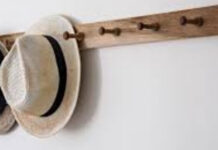To maintain the lush green appearance of your lawn that looks most healthy, refreshing, and inviting, you must work hard to keep it free from pest infestation that can turn it into a dull and scrappy patch of land. Pest invasion in the lawn robs your home of its beauty as the turf turns brown and looks sickly. To protect your lawn from pest invasion, you must first identify the threats and the types of pests that cause the most damage so that you can draw a pest control plan in consultation with the professionals at lawn pest control in Tucson.
Despite the best lawn care, it is impossible to keep bugs away, and since all bugs are not equally harmful, you must target the ones that cause the most damage and take steps to eradicate them to prevent them from spoiling your lawn. To ensure that your efforts and money spent in lawn maintenance give the right returns with all-round protection from pests, take time to go through this article, which familiarizes you with the dangerous lawn pets and suggests measures to deal with the creatures effectively. Correct identification of lawn pests is at the root of finding a cure for it with proper and timely treatment.
In addition to pest control for protecting your lawn, you must use the services of a professional Mosquito pest exterminator to create a healthy outdoor environment by getting rid of mosquitoes so that you can spend a peaceful time outdoors.
Grubs
White grubs or beetle larvae are one of the most damaging lawn pests. These are larvae of several beetles like masked chafers, scarab beetles, and Japanese beetles. These plump, C-shaped larvae descend on your lawn for most of the year, especially during spring and summer as well as early fall, and reside just below the soil surface while surviving by feeding on lawn grassroots. If you observe wilted grass blades, it is a sign of grub attack, and soon the affected area will turn into a brown patch and finally meet with its death. Grub damaged turf becomes spongy that is easy to lift, and you find grubs underneath. If you see moles, skinks, and crows feeding on your lawn, it is a sure presence of grubs that these creatures feed upon.
Chinch bug
Chinch bugs of various types can destroy the turf of your lawn, and the most common type is the hairy chinch bugs that exist almost across the country. The chinch bugs feed on grass, and these sap-sucking insects can cause extensive damage to lawns. Almost all types of chinch bugs, especially the hairy chinch bugs attack lawns and keep sucking at the grass blades until it dies. The added problem is that insects secrete an anticoagulant compound that robs the grasses of their natural ability to absorb water. As a result, the grass withers away with time.
The time between June and September is the most worrying for homeowners because the chinch bugs are most active during this period as it is the time for active feeding. The attack is visible in the form of irregular patches of turf and then turns yellow and finally brown. The grass’s dryness and wilting may deceive homeowners who might think it to be drought stress, but closer inspection will reveal the real culprit.
Armyworm
Armyworms treat your lawn as a battleground. These colored pests are about 1 to 2 inches long, and the common colors are yellow, pink, and gray. The insects turn into brown months that are easy to detect at night. As these insects move towards the light, their furry abdomens become visible. Grass blades and stems are the targets of armyworms, and it even feeds of leaves of other plants rendering these into skeletons. The evenings and nights are the best feeding time for armyworms that prefer to stay away from the heat and light during the day and continue heavy feeding during the night and early morning. When you see circular bare spots in the lawn, it is the result of heavy feeding by armyworms.
Check for lawn damage.
Often lawn damage goes unnoticed until the damage sets in deep. Early detection can easily mitigate the problems, but at any stage, you must use some insecticide appropriate for the type of bug. Most of the pesticides and insecticides can kill several types of pests, often numbering 100. These insecticides kill the insects as soon as the bugs come in contact with it. Luckily, the insecticides that kill bugs do not harm the plants and flowers as well as grass.
To get the most from your outdoor spaces and make it a place to enjoy some fun time with family and friends, you must maintain your lawn impeccably by regular treatment with pesticides and insecticides. Avail of professional lawn maintenance services to ensure that the lawn stays healthy round the year.


















